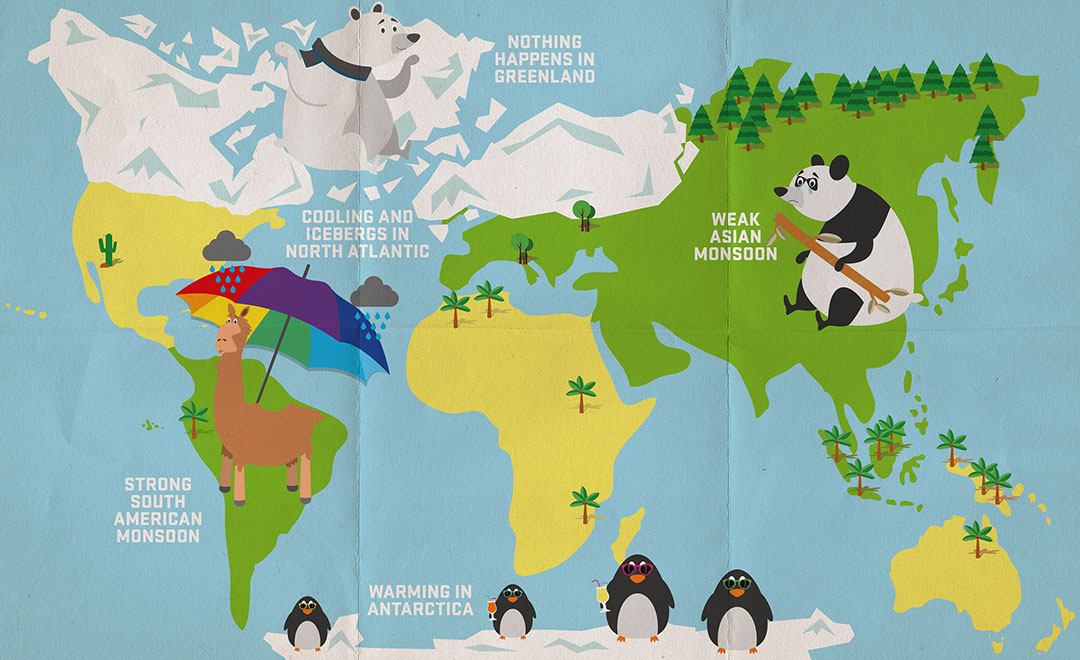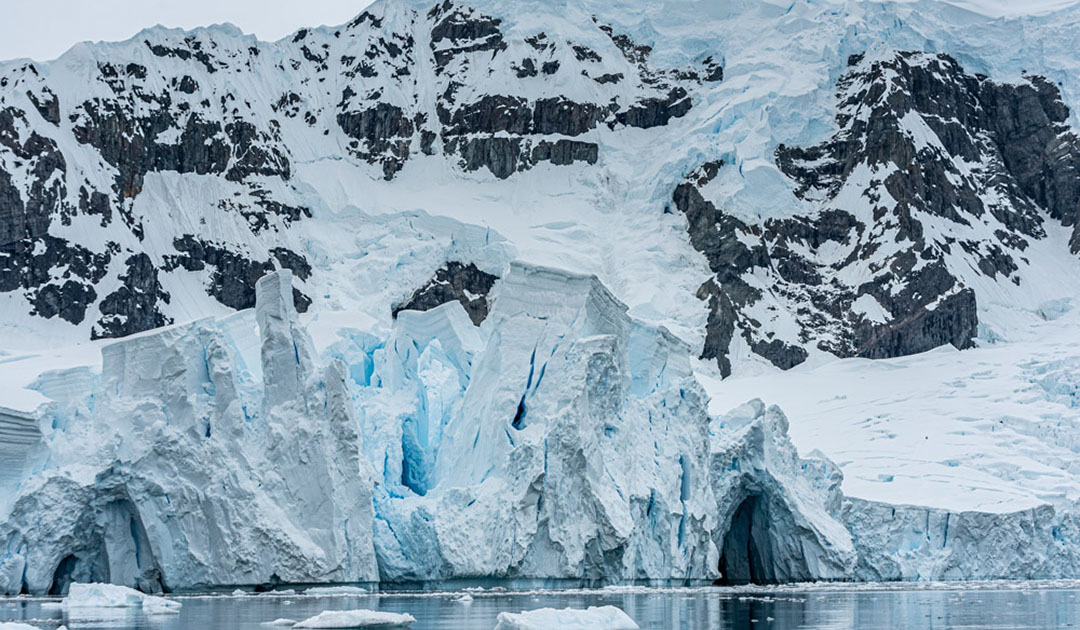
In the immediate vicinity of Greenland, massive icebergs regularly broke off from an ice sheet in North America during the last ice age. The large amounts of ice in the North Atlantic around Greenland had abrupt effects on global climate, including Antarctica. The only region that did not respond at all with a temperature change to the events was Greenland, despite its pole position. The new findings raise new questions about climate dynamics.
The episodes in which huge icebergs broke off the North American ice sheet during the most recent ice age — 16,000 to 60,000 years ago — are known as Heinrich events. They occurred suddenly and altered ocean currents, caused cooling in the North Atlantic and affected monsoon rainfall worldwide.
What impact these events had on Greenland was previously unknown, but the island was considered to be very sensitive to changes in the North Atlantic. Oregon State University scientists now show in a study published on 24 April by Nature that the opposite was true.
“It turns out that nothing has happened in Greenland. The temperature just stayed the same,” said Kaden Martin, a doctoral student in Oregon State University’s College of Earth, Ocean and Atmospheric Sciences, and the lead author of the study. “They had front row seats but didn’t get the show.”
Using ice cores from Antarctica, the researchers were able to determine that rapid warming occurred on the white continent in the aftermath of the Heinrich events, suggesting teleconnection of the polar regions via the atmosphere. The researchers had expected that the large number of icebergs floating around Greenland would have led to cooling there as well.

Greenland’s lack of response to such drastic climate-related events surprised scientists and could have implications for understanding past climate dynamics, according to Christo Buizert, an assistant professor in the College of Earth, Ocean and Atmospheric Sciences, and a co-author of the study.
“If anything, our results raise more questions than answers,” Mr Buizert, a climate-change specialist who uses ice cores from Greenland and Antarctica to reconstruct and understand Earth’s climate history, said. “This changes the way we look at these massive events in the North Atlantic. It’s puzzling that far-away Antarctica responds more strongly than nearby Greenland,” Mr Buizert said. The findings challenge current understanding of global climate dynamics during these massive events.
For the current study, the scientists used an ice core taken back in 1992 at the highest point in Greenland, where the ice sheet is more than 3,000 meters thick. Since then, the core has been stored at the National Science Foundation Ice Core Facility in Denver, Colorado. The eam analysed the ice core again, this time using newly developed instruments and measurements.
“When these big calving events happen in the Arctic, we now know that Antarctica responds immediately,” Mr Buizert said. “What happens in one part of the world affects the rest of the world. This interhemispheric connection is likely caused by a change in global wind patterns.”

The researchers’s next step is to find out if climate models can reproduce what happened after the new information is added. “There has to be a story that fits all the evidence, something that connects all the dots,” Mr Buizert said. “Our discovery adds two new points; it’s not the whole story, and it may not be the main story. It’s possible that the Pacific Ocean plays an important role that we don’t yet understand.”
The researchers emphasise that the most important goal is to better understand how the climate system is connected and how the individual components interact.
“Heinrich events may not recur in the future, but abrupt changes in the globally interconnected climate system will occur again,” Mr Martin said. “Understanding the global dynamics of the climate system can help us better forecast future impacts and inform how we can respond and adapt.”
Julia Hager, PolarJournal
Featured image: Michael Wenger
Link to the study: Kaden C. Martin, Christo Buizert, Jon S. Edwards, et al. Bipolar impact and phasing of Heinrich-type climate variability. Nature, 2023; DOI: 10.1038/s41586-023-05875-2.
More on the subject:





